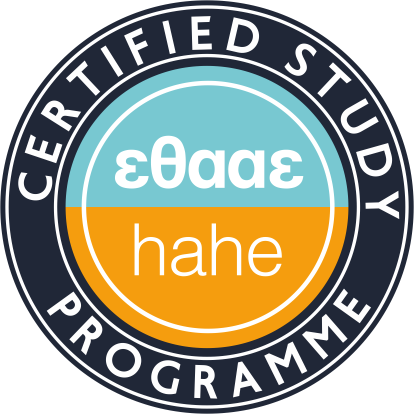Text Analysis and Translation ‒ English
Teaching Staff: Kozobolis Stavros
Course Code: EN-4000
Gram-Web Code: ΑΣ0102-1
Course Category: Specific Background
Course Type: Compulsory
Course Level: Undergraduate
Course Language: English / Greek
Semester: 4th
ECTS: 2
Total Hours: 2
Erasmus: Available (in English)
The course aims to enhance students’ awareness of the process of pre-translation text analysis by familiarizing them mainly with the model of text analysis proposed by C. Nord but also drawing on other analysis frameworks and criteria. The notion of textuality is discussed based on the Beaugrande & Dressler model and special emphasis is placed on identifying text types, register and intertextual elements. Through the practical tasks of the course students employ the analysis frameworks and criteria in order to build their skills of pre-translation analysis, and ultimately identify its indispensable value in the translation process.
1) identify different text types and genres and discuss their stylistic differences
2) explain how texts differ based on genre and register and discuss the expected conventions of familiar text types
3) successfully complete a pre-translation analysis using certain criteria based on the Nord model
4) reflect on the value of pre-translation analysis and its processes and results/effects on the act of translation
5) assess and evaluate challenges of the source text and identify suitable priorities and strategies
6) identify elements of intertextuality and appreciate its effects
1. Course overview: Basic Concepts - What is a text?
2. Translation and Text Typology
3. Text Analysis Model by Nord - General Overview
4. Expanding on the Nord Model – Extratextual Features
5. Expanding on the Nord Model – Intratextual Features I
6. Expanding on the Nord Model – Intratextual Features II
7. Translation and Register
8. Seven standards of textuality – Text Linguistics
9. Intertextuality and Translation
10. Practice on Text Analysis – Student Presentations
11. Practice on Text Analysis – Student Presentations
12. Practice on Text Analysis – Student Presentations
13. Practice on Text Analysis – Student Presentations
Beaugrande, R. & Dressler, W. (1996). Introduction to Text Linguistics. 8th impression, London and New York: Longman.
Hatim, B. & Mason, I. (1997). Discourse and the Translator. London: Routledge, 6th impression.
Munday, J. (2001). Introducing Translation Studies. Theories and Applications. London: Routledge.
Nord, C. (1991). Text Analysis in Translation: Theory, Methodology, and Didactic Application of a Model for Translation-Oriented Text-analysis. Μanchester: St. Jerome Publishing.
Venuti, L. (ed.) (2000) The Translation Studies Reader. London: Routledge.
The course is delivered in an interactive lecture format with input and short tasks that provide opportunities for student engagement and discussion. There are also opportunities for team-work in the practical activities, where students undertake a project of pre-translation text analysis
Use of PPT slides / Use of E-class and E-assignments
Students deliver a presentation with the aid of PPT slides and other ICT means
Written Assignment (50% of total grade)
Oral presentation of pre-translation text analysis project (50% of total grade)
Back
Undergraduate
Secretariat
Galinos Building (1st floor)
Corfu, GR-49132
Open to the public:
Mon, Wed, Fri: 11am - 1pm
Tue, Thu: 11am - 1pm (Erasmus+)
 E-Class Platform
E-Class Platform
 eSecretariat
eSecretariat
 Webmail
Webmail
 Learning Material Management
Learning Material Management
 Internship Portal
Internship Portal
 Library
Library





 Text Analysis and Translation ‒ English
Text Analysis and Translation ‒ English
